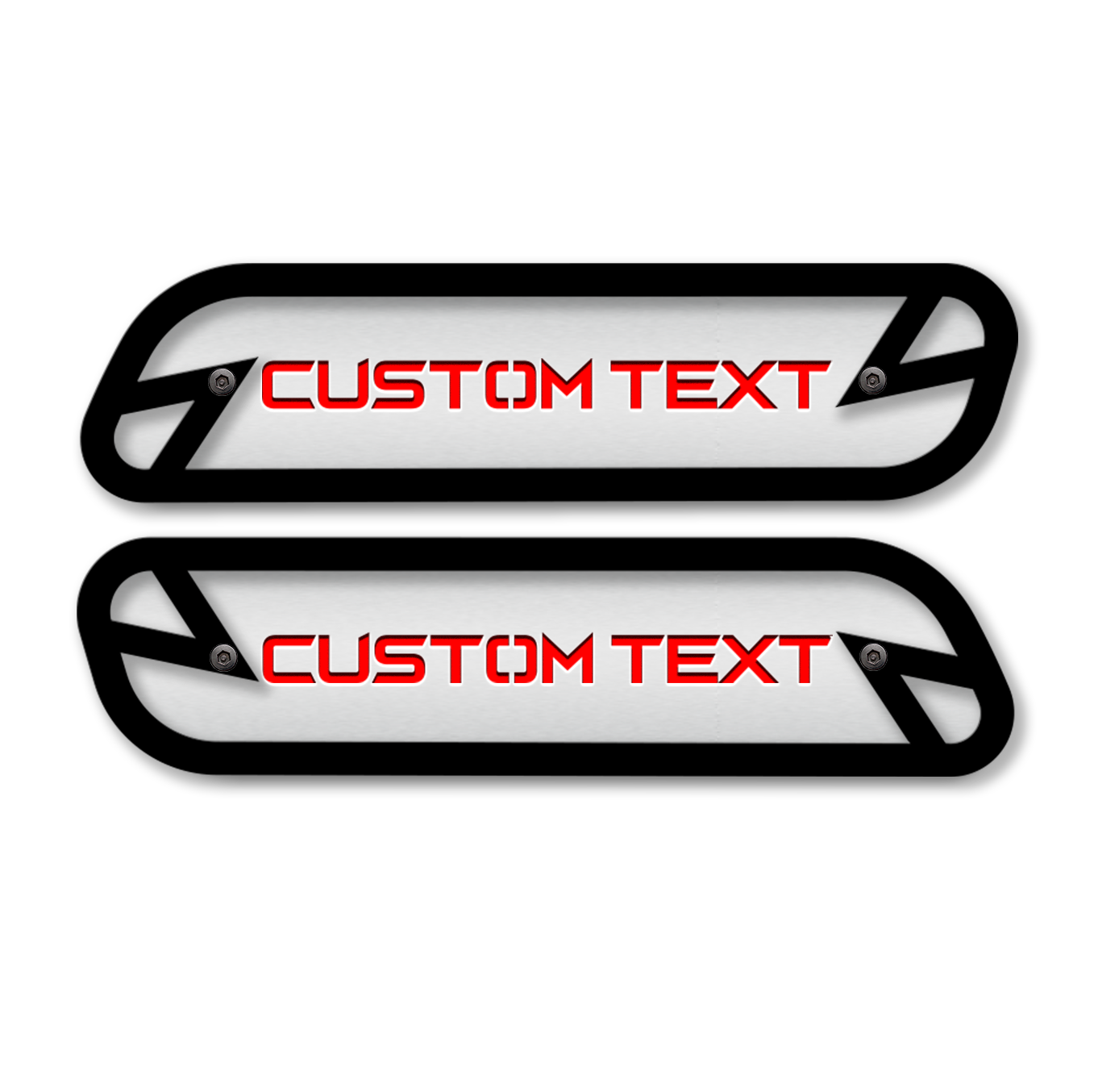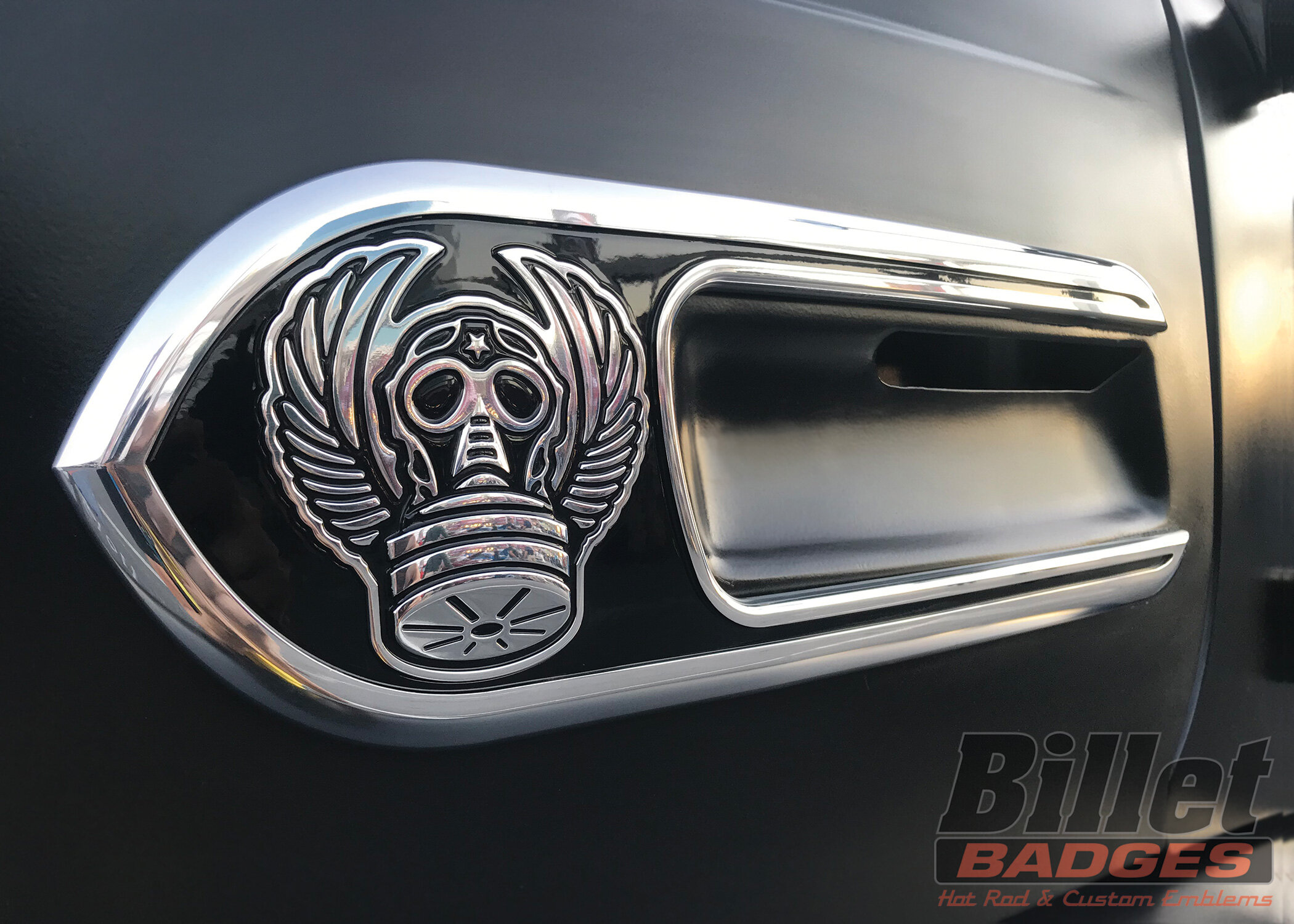Stand apart with a Custom Emblem Crafted for Individuality
Wiki Article
Creating an Enduring Perception With Customized Emblems: Layout Tips and Concepts
The production of a personalized emblem is a crucial action in establishing a brand's identity, yet several neglect the subtleties that contribute to its effectiveness (Custom Emblem). A well-executed design not just communicates core worths but likewise reverberates with target audiences on numerous degrees. Focusing on elements such as shade choice, typography, and symbolic value can enhance the emblem's effect. As we discover these critical elements, it comes to be clear that there is even more to crafting an emblem than plain aesthetic appeals; understanding these principles can change your method to brand name depiction. What vital elements should be prioritized for optimal result?Recognizing Your Brand Identity
Recognizing your brand identity is vital for creating custom-made symbols that resonate with your target audience. By clearly verbalizing what your brand stands for, you can make sure that the layout aspects of your emblem mirror these core principles.
A distinct brand name identification not just help in developing a remarkable symbol however additionally fosters brand name commitment and acknowledgment. Eventually, a symbol that genuinely mirrors your brand identity will certainly produce a significant link with your audience, reinforcing your message and improving your general brand strategy.
Selecting the Right Colors
Selecting the right colors for your custom-made emblem plays a crucial role in communicating your brand name's identity and message. Colors evoke emotions and can considerably influence understandings, making it essential to pick shades that resonate with your target market. Begin by considering the mental impact of colors; for instance, blue commonly shares trust and professionalism and reliability, while red can stimulate exhilaration and seriousness.It is likewise crucial to straighten your shade choices with your brand name's values and industry. A tech firm might choose cool colors, such as greens and blues, to show technology and dependability, whereas an imaginative firm could embrace vibrant and dynamic colors to display creative thinking and energy.
Additionally, take into consideration the shade harmony in your design. Making use of a color wheel can help you identify corresponding or analogous colors that produce visual equilibrium. Go for a maximum of three key colors to keep simpleness and memorability.
Typography and Typeface Choice
An appropriate typeface can substantially improve the influence of your personalized emblem, making typography and font style selection essential elements of the layout process. The font must straighten with the brand's identification, conveying the proper tone and message. A contemporary sans-serif font style might stimulate a sense of advancement and simplicity, while a traditional serif font style can communicate tradition and reliability.When selecting a font, consider clarity and scalability. Your symbol will be made use of across numerous media, from calling card to signboards, so the font has to continue to be clear at any type of size. Additionally, avoid excessively ornamental typefaces that might interfere with the overall design and message.
Integrating typefaces can additionally produce visual rate of interest but requires cautious pairing. Custom Emblem. An usual method is to use a strong font for the major text and a complementary lighter one for secondary components. Uniformity is key; restrict your selection to two or 3 typefaces to keep a natural appearance
Including Purposeful Symbols

For example, a tree may stand for growth and security, while a gear might symbolize development and accuracy. The trick is to make sure that the signs reverberate with your target audience and mirror your brand name's mission. Engage in brainstorming sessions to discover numerous concepts and collect input from diverse stakeholders, as this can yield a richer selection of options.
As soon as you have actually recognized prospective icons, check their efficiency by sharing them with a focus group or carrying out studies. This comments can give understandings into just how well the signs communicate your designated message. Additionally, take into consideration how these icons will function in combination with other design components, such as shades and typography, to create an impactful and cohesive symbol. Inevitably, the right symbols can enhance acknowledgment and foster a more powerful emotional link with your target market, making your brand significant he said and unforgettable.
Making Sure Versatility and Scalability
Making certain that your customized emblem is functional and scalable is vital for its performance throughout numerous applications and mediums. A well-designed symbol must maintain its honesty and visual charm whether it's shown on a calling card, a web site, or a large banner. To achieve this, concentrate on creating a layout that is straightforward yet impactful, staying clear of elaborate details that may come to be shed at smaller dimensions.
Examining your symbol in numerous formats and dimensions is crucial. Assess how it carries out on different histories and in numerous atmospheres to guarantee it remains well-known and reliable. By focusing on versatility and scalability in your layout process, you will produce an emblem that stands the examination of time and effectively represents your brand name across all touchpoints.

Conclusion
In final thought, the creation of customized symbols demands a strategic method that balances different layout aspects, including brand name identification, shade selection, typography, and symbolic depiction. Stressing simplicity and scalability ensures that the symbol remains flexible throughout different applications, while meaningful symbols enhance psychological vibration with go the audience. By meticulously integrating these elements, brands can grow a distinct identification that fosters recognition and leaves a lasting impact on customers.A well-defined brand identity not only aids in producing an unforgettable emblem however likewise promotes brand name commitment and acknowledgment. Inevitably, an emblem that really reflects your brand identification will certainly produce a significant link with your target market, enhancing your message and enhancing your overall brand name strategy.
Choosing the best colors for your custom-made emblem plays an essential role in sharing your brand's identification and message. By prioritizing flexibility and scalability in your design process, you will certainly develop a symbol that stands the test of time and properly represents your brand name throughout all touchpoints.
In final thought, the production of customized emblems necessitates a tactical technique that integrates various layout aspects, including brand identity, shade selection, typography, and symbolic representation.
Report this wiki page